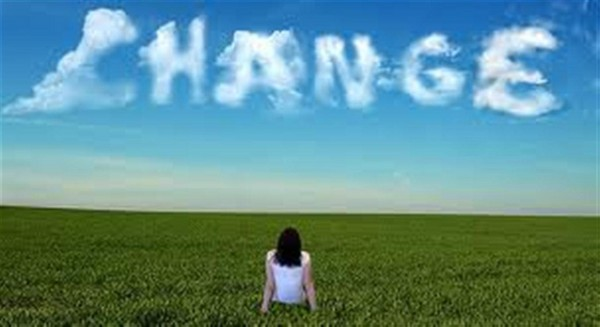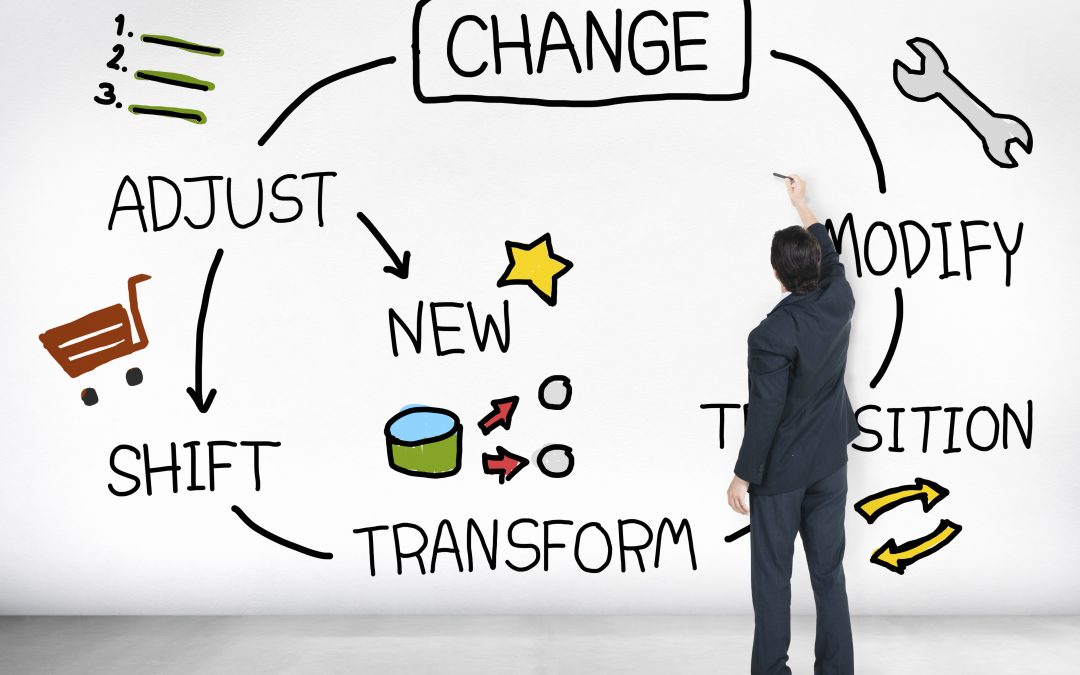
by pam | Jul 26, 2022 | Change, Coping with Change, Embracing Change, Life Transitions, Women in Business
What if you could reinvent yourself and live the life of your dreams?
What if you could leave your corporate job and start a business based on what makes your soul sing?
About six months ago I started hearing people use the words “I want to reinvent myself” or “I have reinvented myself.” I got curious and did some research on “reinvention”. I also reflected on my own life and realized how many times I have reinvented myself.
I’d like to share a true story of someone I know who reinvented themselves. Their name has been changed for confidentiality.
I met Donna at a Newcomer’s Club shortly after I moved to Victoria about five years ago. Donna shared that she had moved to Victoria with her husband and within six months of arriving, her husband, the love of her life, died of cancer. She realized she was dealing with a number of life transitions and signed up and attended a one-day retreat I did on “Embracing Life Transitions”. She left with more insight into how she responds to change and why, including a 5-step “Art of Change Framework”[1], and an action plan for moving forward.
Recently Donna shared with me that she is no longer the woman she was when her husband Ben died. She revealed that he was an extreme extrovert and she lived life “on his coat tails”. She reflected that when she got married, she was quiet and lacking in confidence; and that her confidence built being with Ben, and she counted on him for support.
Since Ben’s death, Donna began to work on herself and getting in shape. She acknowledged that over the past few years, she has felt like a single woman who is finding her new self. When she meets new people, she is Donna only, and that has impacted who she is and how she acts.
Donna and Ben sailed for more than thirty years. Ben was the captain. Donna assisted as crew. Since Ben’s death Donna decided she wanted to learn to be captain, and after a number of sailing courses she now not only captains her boat but participates in local races.
Recently, Donna revealed to me that she is no longer the woman she was when Ben was alive. She has reinvented herself and is now “Lady D”. She even christened her sailboat “Lady D”!
How did Donna reinvent herself and what does it take to let go of fear and reinvent yourself?
Stay tuned for the next installment!
Do you relate to Donna? Have you reinvented yourself? What is the biggest lesson you learned from doing so? I welcome your thoughts and comments below.
[1] https://pamela-thompson.com/strengthen-impact-world-dance-change/

by pam | Jun 13, 2021 | Change, Embracing Change, Life Transitions, Managing Change, Women in Business
The pandemic has been a time of transition for us all.
- You may have transitioned from having a job you loved to being laid off
- You may have transitioned from working in the office to working at home
- You may have experienced a relationship ending due to the stress of working at home together while at the same time looking after young children
- You may have had time to reflect and realize that you want to make a bigger difference in the world
- You may be feeling exhausted and lack clarity on your next steps.
Imagine having practical tools and a proven process to support you to move through transitions in your life and work. One that supports you to move from anxiety and uncertainty toward clarity and fulfillment.
I believe that embracing change is a creative process that opens us up to new possibilities.
My 5-step “Art of Change Process” enables you to identify a change you are struggling with, understand how you respond to change and why, let go of beliefs, emotions and behaviors that are holding you back, envision the change you want to see and create an action plan to move forward.
The “Art of Change Process” can be applied to both your personal and work life and to teams if you are a leader. It enables you to move from resisting change to embracing it.
You may be thinking “I love change. I don’t resist it.” Yet if you peel back the layers and reflect on changes in your life, you may come to realize that many of the changes YOU initiated, so they felt easy to embrace. However, if you reflect on those changes that were imposed on you or initiated by someone else, you may find your experience is different; e.g. being “let go” from a job or having a partner leave you when you weren’t expecting it.
A key concept I have found helpful for myself and for clients has been understanding the difference between a life change and a transition.
William Bridges in his book “Transitions – Making Sense of Life Changes”[1] based on over 30 years of working with people and organizations, noted that a life change is external and situational such as divorce papers or a pink slip; something tangible that we can see. Whereas, a transition is internal and psychological; the internal work we do to reorient and readjust to our new external reality. Many of us do the change, but don’t do what I call the “transition journey” work.
Based on more than 25 years of consulting and coaching with individuals and organizations on 5 continents, the Art of Change framework is a proven model for embracing change whether it involves getting unstuck and moving forward when change is imposed on us, or whether we initiate an organizational or life change.
The Art of Change Framework is a 5-step process that uses the metaphor of life as a dance. The steps are:
- Shine the Light – Explore how you respond to change and why
- Choose Your Dance – Identify the transition you want to work on and where you are on your transition journey
- Feel the Rhythm and Learn the Steps – Commit to embracing change in your body rather than resisting it, and begin doing the work associated with the phase of the transition journey you are in
- Practice, Practice, Practice! – Do the work that includes letting go, identifying lessons learned, envisioning the work or organization of your dreams, taking action, and viewing change as a creative process that opens you up to new possibilities
- Consciously Share Your Dance with the World – Observe the positive changes in yourself, how others respond to you, and the positive impact you have on your family, friends, communities and workplaces.
If you’re intrigued to learn more, I invite you to sign up for my complimentary “Art of Change Framework” white paper that includes practical tips and tools at https://pamela-thompson.com.
I welcome your comments and strategies you’ve found helpful to embrace life transitions below.
[1] Bridges, William, Transitions – Making Sense of Life’s Changes. Da Capo Press, 2004

by pam | Mar 23, 2021 | Change, Creative Living, Embracing Change, Leadership, Women in Business
During these times of unprecedented change, how can you “be the change you want to see in the world”? You may be wanting to initiate change in your family, community, workplace, your own business … the world. Where do you start?
A good place to start is with yourself. Do some inner exploration. Some useful questions are: “How do I typically respond to change? Rate yourself on a scale from 1 to 10 – 1 being scares me to death and 10 being I thrive on it. Then ask yourself “How do I typically respond to a change that is imposed on me or comes out of the blue?” Rate yourself again on a scale from 1 to 10 and notice if there is any difference. It’s helpful to journal your responses to these questions.
Typically, we rate ourselves higher when we initiate or feel we have control over a change. When we feel it is imposed or comes “out of the blue” we often rate ourselves lower. That said many leaders thrive on change and you may be one of them.
Now ask yourself, “When I think about change what thoughts, words, emotions come up for me?”
You may also focus on a change that you are currently having to deal with and notice what thoughts, words or emotions come up for you. If there are some negative ones such as anger, resentment, fear … (which are natural), imagine each one as a rock in a knapsack on your back, feel the weight of them and then imagine releasing them all and having them all fall to the ground.
It is extremely important to identify negative feelings in our bodies, and to acknowledge and consciously release them, in order for us to move forward and embrace a change.
It is helpful to identify any old stories about change you may have learned from people close to you early in life who were trying to keep you safe. You may wish to rewrite your narrative around change and underpin it with a positive belief such as: “Embracing change is a creative process that opens me up to new possibilities.” Notice how that makes you feel.
Being self-aware of how you respond to change is important, as people close to you in your family, community, workplace … look up to you and learn from how you model and respond to change. Do you typically embrace or resist it?
What insights have you gotten from these exercises? I welcome your thoughts and comments below.

by pam | Nov 30, 2020 | Change, Creative Living, Dealing with Stress, Dealing with Uncertainty, Embracing Change, Uncertainty, Women in Business
We are almost 9 months into the pandemic. How has it been for you? It is useful to reflect on what you’ve learned from a life change/period of uncertainty/transition.
According to William Bridges, author of “Transitions: Making Sense of Life’s Changes”, in order to move successfully from one life transition to another, it is important to let go of any negative emotions associated with it, to celebrate the positive aspects and lessons learned from it … and to get clear on your vision for a new life, relationship, career, business.
Bridges differentiates between a life change and a transition. He states that a life change is situational and external to us, whereas a transition is internal and psychological. It is the internal work we do to adapt and reorient ourselves to our new external reality.
Research and life experience show that if we don’t do the internal transition work, then we often recreate the same patterns in our lives. An example is someone after 3 marriages realizes that s/he has married 3 men/women who are similar having dealt with the same issues in each marriage, never resolving them but instead recreating them and remaining unhappy and unfulfilled or moving on to the next.
In my personal life, work with clients, and interviews with leaders, I’ve discovered that people have reacted in many different ways during the pandemic. Some were initially knocked off balance and found it really challenging to deal with all the changes in their work-life, family life, and personal life. They had difficulty focusing and were unproductive. Many have been “up and down” in terms of their emotions and focus during the pandemic. In contrast, others after the initial shock, found their creative juices flowing and dove into new projects. They continue to feel energized and optimistic.
No longer having to commute to work, many have taken time to reflect and realized the work they were doing was not fulfilling. They have been preoccupied thinking of how they can transition out of a “real” job and start that business they’ve been dreaming about.
Others are reeling from the loss of a loved one or loved ones who were sadly taken from them due to COVID-19. Still others have recovered from COVID-19 with negative impacts on their health that have forced them to change their lifestyles and adapt to their “new normal”.
The pandemic, in the context of change and uncertainty, has caused much upheaval in many of our lives. It has also put us in touch with how we typically respond to change and why. Do you typically embrace or resist change and uncertainty?
Here are a few questions to ask yourself to reflect on and provide you with insight into how you respond to change and uncertainty. I encourage you to take some time and journal your responses to the following questions: What have you learned from COVID-19 about …
yourself?
your partner?
your family?
your workplace/who you work for/your team?
how you work best?
the environment?
Inequities happening around the world?
Learn from and embrace life transitions is one of the 7 keys in my book “Learning to Dance with Life: A Guide for High Achieving Women”. Several years after writing it and coaching a number of business and professional women, I realized that out of the 7 keys, it is the master key that “unlocks the door” to a life of increased health, happiness, fulfillment and inner peace.
Working further with leaders and changemakers, I created the Art of Change Framework: A Guide to Personal and Organizational Change. If you’d like to learn more about how to embrace change, I invite you to access “The Art of Change Framework” on my homepage at: https://pamela-thompson.com/
What have you learned about yourself and others since COVID-19 began? I welcome your thoughts and comments below.

by pam | Oct 23, 2020 | Change, Dealing with Uncertainty, Embracing Change, LeadinginUncertainTimes, Uncertainty, Women in Business
During these times of intense change, why is it important to be able to “manage uncertainty”? Let’s first define “uncertainty”.
Uncertainty arises when change comes to us “out of the blue” or is imposed on us by someone or something that is outside of our control. This could be when we receive a “pink slip” and are laid off from a job with little or no previous warning. It can be when our partner says they no longer love us, have found someone new and asks for a divorce (when you have no inkling of it). The added intensity of the current pandemic is that usually there is some sort of predictable timeline on a change that comes to us “out of the blue”; whereas with this pandemic we have no idea when we will return to our “new normal” and what that will look like.
What happens when we feel uncertain?
We often experience fear and anxiety and go into fight, flight or freeze – the stress response – as we feel unsafe and our body wants to protect us. This response is meant to happen for short periods of time; however, if we live in constant uncertainty, the stress hormones keep coursing through our bodies and over time can lead to burnout and adrenal fatigue, auto-immune disorders such a fibromyalgia and multiple sclerosis, and various types of cancer.
When we feel uncertain we may “jump” at the first solution that presents itself, so we feel more comfortable. This can be a business decision that isn’t well thought through, a position we aren’t suited for because we need the money, or a relationship with someone who comes into our life, so we don’t feel alone.
When we feel uncertain it is often difficult to focus; when this happens over time our productivity goes down and then it negatively affects our bottom lines.
When we are under the grip of uncertainty we often feel “on edge” and more easily “snap” at those close to us at home and at work.
So, if we don’t learn to “manage uncertainty” it has a number of negative impacts on our bodies, our minds, our relationships, our work, our businesses and our bottom lines.
What do I mean by “Managing Uncertainty”? To me it means understanding how I respond to change that “comes out of the blue” and having tools and processes to support me to move through it with courage, clarity and confidence.
If you have your own business or are a leader in an organization, it means becoming aware of how others on your team respond to change that “comes out of the blue”, and supporting them with tools and processes to help them move through and “manage intense change” and develop creative solutions to address issues and situations related to that intense change.
A helpful framework to support you and your team to “manage uncertainty” is my “Art of Change” Framework.(See https://pamela-thompson.com/strengthen-impact-world-dance-change/ for an outline of the framework.) It is underpinned by the belief that “embracing change (and uncertainty) is a creative process that opens us up to new possibilities”. Using this 5-step process, you identify an uncertain situation you want to work on and through the process gain increased understanding and awareness of that situation and how you and your team respond to it, explore and let go of old patterns and ways of functioning that are no longer working, envision a new way of working, and develop an action plan to move toward the new vision.
The “Art of Change” Framework is based on over 25 years of living and working on 5 continents (including in conflict zones) as a consultant, facilitator and project manager. It is underpinned by evidence from neuroscience, organizational development, the health promoting and healing benefits of the arts and eastern psychology.
To learn more about the workshops on “Managing Uncertainty” I offer to groups and organizations, contact me at pam@creativelivingcommunity.com to set up a discovery call and explore how I may support you and your team.

by pam | Apr 17, 2020 | Change, Creative Living, Embracing Change, Leadership, LeadinginUncertainTimes
During this time of immense change and uncertainty have you felt distracted, anxious, had difficulty sleeping? If so you are not alone. It’s happened to me and a number of my friends, colleagues and clients I’ve recently spoken with.
Many people are noticing that old patterns or beliefs they thought they had dealt with and/or cleared years ago, are surfacing. Others feel like they’re on an emotional teeter-totter; one day feeling upbeat and positive and the next feeling sad, anxious and overwhelmed.
What has helped me to get focused and stay positive is a decision I made several weeks ago to accept a new position and project in my life. Since that day (March 20), I have felt energized, creative, and focused.
I’m excited to share that I recently was named Ambassador for Canada of Female Wave of Change, a global movement that unites women who are changing the world into a better place. Female Wave of Change offers women from all walks of life a safe space where they can be their authentic selves, be economically empowered and grow into leaders and changemakers who shape the world for their own futures and for future generations. “I join(ed) FWoC because I feel so aligned with their Purpose, Vision, Mission and Core Values and I want to be part of this amazing group of women (and some men) and contribute to expanding and strengthening this incredible wave of change.”
To learn more about the Purpose, Vision, Mission and Values of the group visit: https://femalewaveofchange.com.
Ingun Bol, the founder, from the Netherlands, started the movement only 3 years ago and currently has Ambassadors in more than 40 countries. Achievements to date include: 1) designing and rolling out Women Leading in Change; a 12 module group online leadership program for women who want to make impactful changes. The program prepares women to be authentic leaders drawing on their feminine qualities and values; 2) designing Reshape the Future – a modular online program aimed at empowering and teaching participants to become agents of change by building on their inner strengths, talents and capabilities. This leadership program was initially to roll out in April 2020 and has been postponed till September 2020; 3) Hosting their first global conference in Johannesburg in September 2019 where a Call to Action on Human Rights was developed.
In addition, Ambassadors with the support of their “Wavemakers” from different parts of the world, have been designing and implementing impactful projects such as one that taught poor African women financial literacy and supports them to secure mortgages they eventually pay off so they can own their own homes.
Areas of focus for various months in 2020 were identified last year and due to COVID-19, the leadership team recently revisited their priorities and decided to offer free virtual webinars, workshops, coaching and dialogue sessions related to the Corona Virus and situations we are all currently facing, and open these up to everyone. I was honored to have the opportunity to moderate a recent Panel of Older Wise Women where they shared their Purpose, their Visions of the World after COVID-19 and their views on Feminine Leaders of the Future.
You may access recordings of recent virtual webinars/workshops, etc. on the Female Wave of Change YouTube Channel and learn about upcoming workshops and events on Facebook at Female Wave of Change Global . We’d love to have you join us!
What new “thing(s)” are you creating or focusing on during this time when we’ve all been forced to slow down and reflect? Perhaps it’s your garden. Perhaps you’re cooking more and trying new recipes. Perhaps you’re drawing and painting. What is energizing you and keeping you focused? I’d love to hear from you below.





